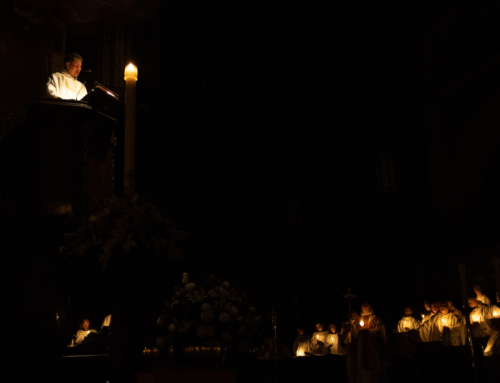You love evil more than good,
and lying more than speaking the truth. (Ps 52:3)
Evidently, lies spread more than truth on the internet. A group of scientists published a research report, “The spread of true and false news online,” in Science magazine in March of last year. The study spanned 10 years of Twitter, analyzing over 100,000 contentious stories, most of which also spread to other social media platforms, like Facebook. According to Jill Lepore in The New Yorker, Facebook’s ‘trending news’ feature helped aid the notorious ‘fake news’ of the 2016 election cycle; the feature has since been terminated.
The online catalyst for false news is not just found on social media. The larger media circuit has also flubbed. Without accusing anyone of malice, we may say that erroneous news, although retracted, has had tremendous consequences. One example comes from the 2019 March for Life. An altercation in front of the Lincoln Memorial between Catholic high schoolers and Nathan Philips, an Omaha Native American political activist, created a firestorm. It began Friday afternoon, and it quickly became national news. On Sunday, I found myself face to face with a Native American Catholic flushed with anger. Having seen and heard the edited video and journalistic coverage, this man accused the Church of racism and hatred. The kneejerk reporting injured this man. He almost refused to attend the baptism of our mutual friends’ daughters. Many people failed to see the truth, including the Washington Post, which is being sued by the 16-year-old student, whose life was threatened by enraged readers.
In prophetic fashion, The Atlantic article covering the scientific report above states: “[The scientists] had to answer a more preliminary question first: What is truth? … It’s a question that can have life-or-death consequences.”
“Quid est veritas?” The same question that escaped the lips of Pontius Pilate haunted the scientists reviewing thousands of false accusations. There is a spirit on the internet and within the first-to-report media cycle related to the mob that condemned Our Lord Jesus Christ.
Saint Thomas Aquinas comments that Ps 52, quoted above, “is understood to be about the evil people who persecuted Christ, whether it was against Christ himself, or against the members of His body” (trans. Gregory Sadler). Furthermore, Aquinas believes the psalm shows the Antichrist’s actions, namely stirring earthly people up.
While the malice of the Sanhedrin primarily led to the conviction of Christ, it’s not unlikely that some of the mob were misinformed religious people. Aquinas mentions that false accusations can proceed from ignorance and rashness, not just an ill will. Twitter, Facebook, social media, and a desperate media cycle struggling to remain relevant have created a monster that loves to induce people to rash judgment.
Perhaps a good Lenten practice this year is to grow in hatred of lies and to grow in the discipline of truth-telling. The next time a tweet or post shows an unconscionable allegation, infuriating story, or political hit piece, pause, question, and pray for the spirit of Truth to come.
✠
Image by Frederick Burr Opper







